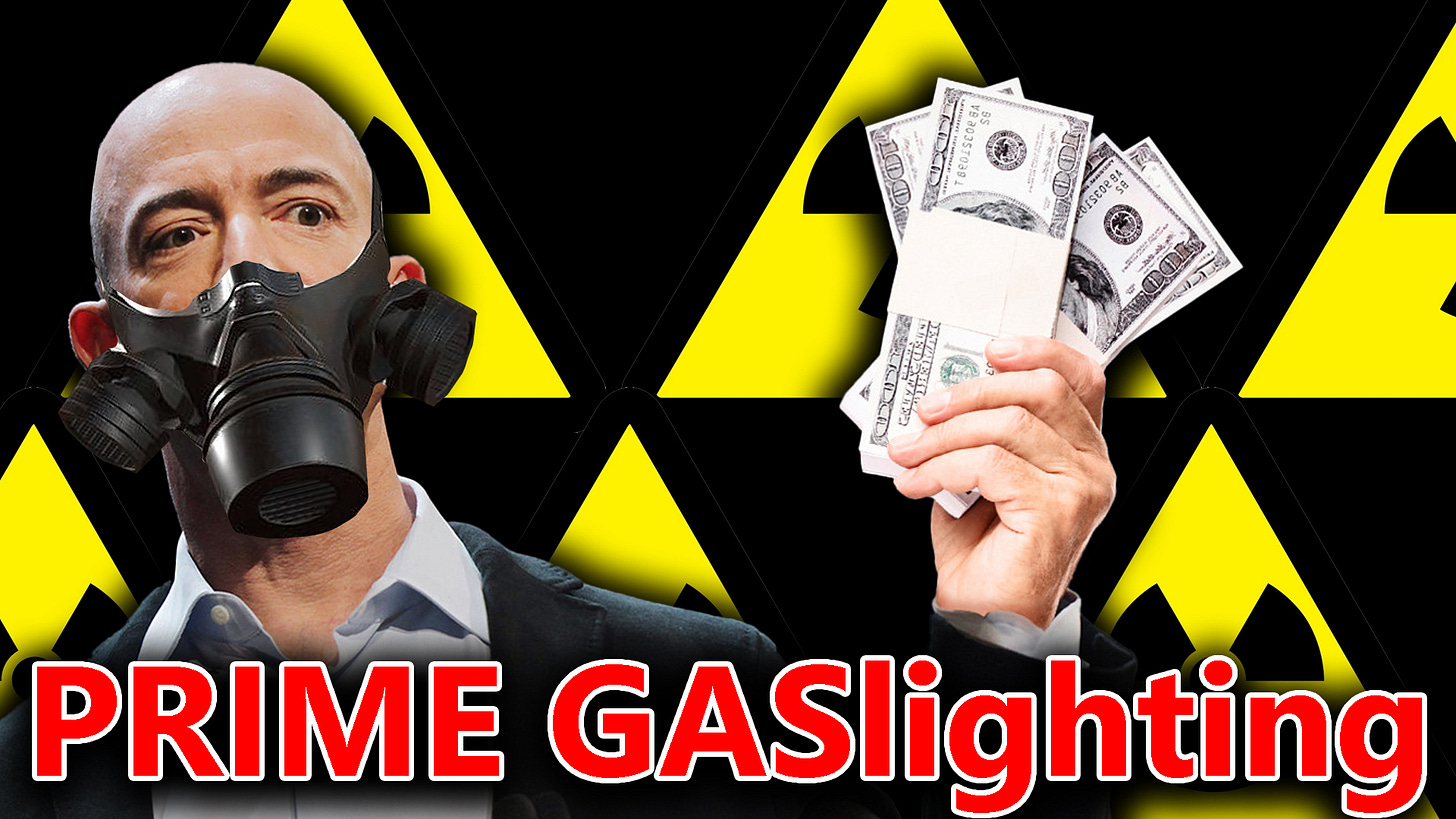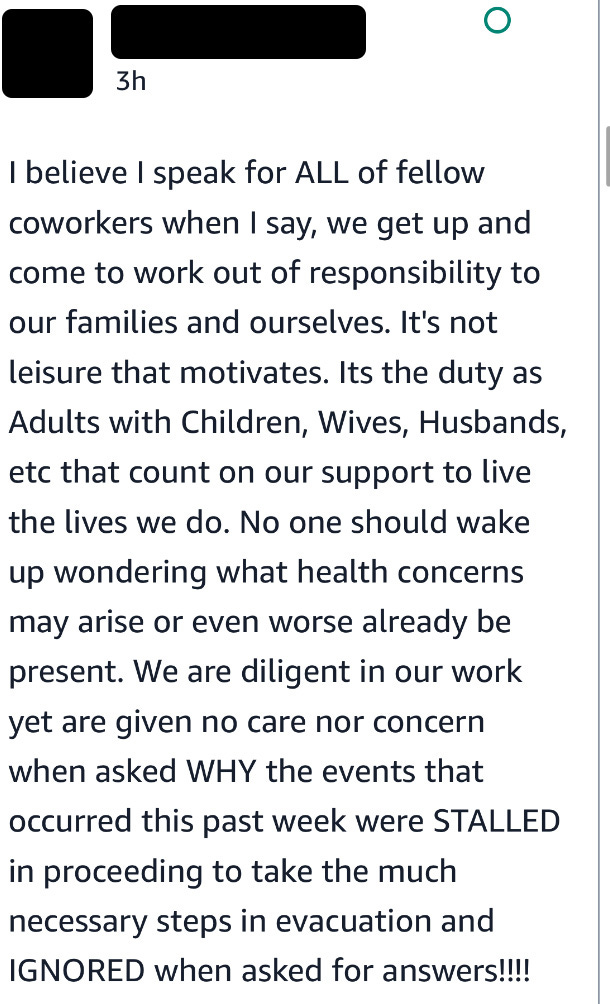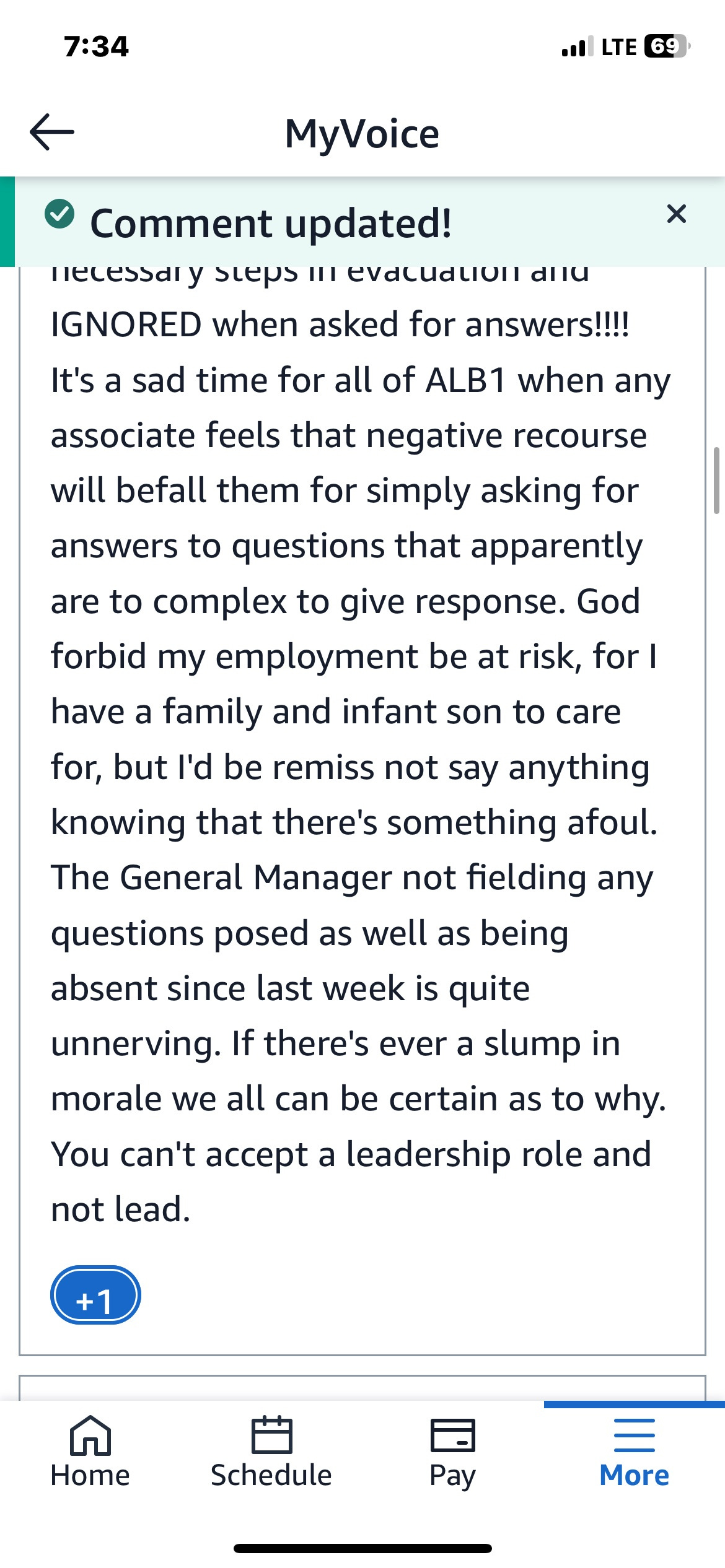EXCLUSIVE: Amazon Honcho Who Refused to Evacuate Sick Workers During Gas Leak Now Lying to Employees About Incident
"I make the call...we are not, I repeat, we are not exiting the building," Amazon worker Tia Leanza recounted GM Nicholas Schlatz yelling; SC obtained Schlatz' misleading email to workers days later
Status Coup has obtained an internal Amazon email written by an Amazon General Manager to workers at ALB1 near Albany NY that misleads employees about what transpired during a potentially dangerous gas leak and evacuation.
On January 5th at around 8 am eastern, Amazon pickers who collect and package items in the warehouse reported to managers a strong odor that smelled like gas, according to Heather Goodall, a worker who led the 2022 ALB1 union drive at ALB1 that ultimately failed (and is headed to court this month after workers accused Amazon of illegal union busting that made it impossible to win the election). Despite reporting the strong gas odor, managers did not evacuate workers.
By the 10am hour, several workers were complaining of headaches, nausea, and coughing. At 10:30am, safety department workers were calling to evacuate workers—which according to Goodall, angered General Manager Nicholas Schlatz.
“He went storming out of his office, went into the safety [department], and said ‘who told you you can evacuate? That’s not your call, you don’t have the authority, we are staying at full capacity. Then he went over the radio and said, ‘no, we’re not evacuating, everybody remains at full capacity.”
The odor, and tug-of-war between safety workers and Schlatz, continued forty minutes later. At 11:10am, Tia Leanza, another ALB1 worker, was laying down in AmCare, Amazon’s first aid clinic, feeling dizzy.
“I did smell gas,” she told Status Coup. While laying in AmCare, Leanza heard safety workers call to evacuate the building. “At about 11:10, one of the AmCare staff came to me and told me specifically—because I was laying down—we’re about to evacuate. He was standing there with his radio and he said that to me and then, over the radio, I heard Nick [the General Manager] say ‘Oh no, we’re not! Operations at full capacity, I make the call. This is my call to make, we are not, I repeat, we are not exiting the building.”
Soon after, an Amazon worker, not General Manager Schlatz, called the local fire department. They arrived shortly before noon eastern.
“The minute the fire company walked in and smelled the gas fumes, they pulled the alarm,” Leanza recounted. Ultimately, the evacuation ordered by the fire department occurred an hour-and-a-half after Schlatz first rejected safety workers’ calls to evacuate the building.
“We weren’t evacuated until 12 after an associate [worker] called the fire department,” Goodall explained. She recounted that when the fire chief arrived, and smelled the gas, he asked “who the hell is in charge here, pulled the fire alarm, and said everybody out.”
[The South Schodack Fire Department did not respond to Status Coup’s request for comment at the time of publishing this story.]
When the fire department arrived, they concluded that there was indeed a gas leak in the building, resulting in an elevated carbon monoxide levels of 40 parts per million.
As Status Coup covered in an interview with Goodall, workers, many of whom were symptomatic due to gas exposure, were left outside by Amazon for over two hours in freezing cold temperatures rather than being sent home (our interview below).
After two hours in the cold, Amazon workers were brought into a cafeteria for an hour until Amazon finally sent them home around 3pm eastern.
On Monday, workers expressed complaints to ALB1 GM Schlatz through Amazon’s digital message board. “No one should wake up wondering what health concerns may arise or even worse already be present. We are diligent in our work yet are given no care nor concern when asked WHY the events that occurred this past week were STALLED in proceeding to take the much necessary steps in evacuation and IGNORED when asked for answers,” a worker wrote on Amazon’s Voice of the Associate digital board.
By Monday evening, Schlatz sent an email to all ALB1 workers at 7:55pm with the subject line: “Event from Friday 1/5/2024.” Based on the accounts of several workers Status Coup spoke too, Schlatz offered what can only be described as a completely misleading version of events of what transpired.
“We’re grateful to our teams who helped evacuate the building in a timely manner and get every single person accounted for quickly,” Schlatz wrote to workers. Of course, the building was not evacuated in a timely manner because Schlatz himself refused requests from the safety department to evacuate the building for an hour-and-a-half.
In another instance of Schlatz misleading employees, he wrote that “after authorities arrived, we fully evacuated the facility.” He left out the fact that it was a worker, not him or other HR officials, who called the fire department. Moreover, “we,” i.e. Amazon, did not evacuate the building—the fire department did.
In 2022, ALB1 workers showed enough interest for the National Labor Relations Board to grant the upstate NY building a union election. Like it did in its attempt to stop the ultimately victorious union at JFK8 in Staten Island, Amazon deployed a multitude of union busting consultants throughout the warehouse to push workers to vote no against unionizing. The effort was ultimately successful, leading to 406 workers to vote against the union and 206 vote yes. But ALB1 contested the election results, accusing Amazon of an array of illegal union busting violations to sabotage the election. On January 29th, a federal judge will hear ALB1’s case and, potentially, grant workers a new union election. During the hearing, Goodall will serve as the lead witness for ALB1.
Amazon did not respond to multiple requests for comment. Schlatz also did not respond to request for comment.
Schlatz’s misleading email to workers below.
ALB1 team,
First, I want to say thanks for everyone’s cooperation during Friday’s evacuation and subsequent closure. Your safety is and always will be our top priority. I’m relieved everyone is safe and there were no injuries.
We’re grateful to our teams who helped evacuate the building in a timely manner and get every single person accounted for quickly. A building inspector and HVAC professionals have been consulted on the issue, and they determined the site is fully safe and operational.
I wanted to take a moment to share more details on what happened and the actions taken to prioritize your safety and minimize impact to you. As soon as the smell was reported, we immediately spread across the building (front areas, aisles, the middle of the building, and the dock areas) to identify the source. After authorities arrived, we fully evacuated the facility. Upon learning from the fire department that additional inspections were needed, we made the decision to temporarily close and pay for all scheduled shifts.
While we were closed, here are the actions that we took to ensure your health and safety:
All (65) rooftop HVAC units were fully audited by our HVAC vendor and determined to be safe.
Multiple vendors tested the building’s air quality using a few different, specialized devices and instruments (multi-gas including CO), which are at safe levels. All readings were safe, and the building was officially cleared to re-open Friday evening at about 8:45 p.m.
Once we resumed operations at 10:30 p.m. our team took hourly air quality measurements out of an abundance of precaution, and all readings were safe.
I’m happy to share that we remain fully safe inside the building and within our operation. It takes all of us to remain safe. We will continue to look for ways to strengthen our safety processes and protocols. Thank you again everyone for your cooperation and understanding. If you have any questions, please don’t hesitate to reach out.
Thank you,
Nick
Nicholas Schlatz
General Manager | ALB1






Something does not add up here. CO (carbon monoxide) is an odorless product of incomplete combustion of fossil fuels, such as "gas". It is certainly also a gas, though "gas leak" generally refers to natural gas or propane leaking from a line or tank or combustion device and is identifiable by an odorant added to it so a leak can be easily noticed.
CO and natural gas or propane can both be present at the same time, though, in a malfunctioning combustion device, so perhaps that was the situation, which is an incredibly dangerous one if combustion and fuel leakage were occurring simultaneously.
Also, odd that after 8 hours there are still no comments here...